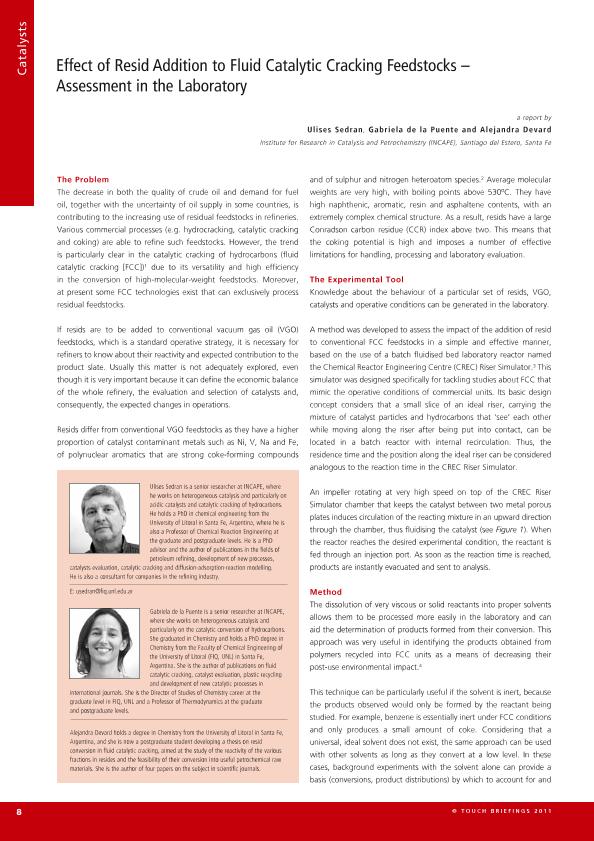Artículo
Effect of resid addition to FCC feedstocks. Assessment in the laboratory
Fecha de publicación:
06/2011
Editorial:
Touch Briefings
Revista:
Hydrocarbon World
ISSN:
1753-3899
Idioma:
Inglés
Tipo de recurso:
Artículo publicado
Clasificación temática:
Resumen
The decrease in both the quality of crude oil and the demand of fuel oil, together with uncertainty in the oil supply in some countries, contribute to the increasing use of residual feedstocks in refineries. While various commercial processes (e.g. hydrocracking, catalytic cracking, coking) are able to process them, the trend is particularly perceivable in the catalytic cracking of hydrocarbons (FCC) due to its versatility and high efficiency in the conversion of heavy molecular weight feedstocks. Moreover, at present, some FCC technologies exist that can process residual feedstocks exclusively. If resids are to be added to conventional vacuum gas oils (VGO) feedstocks, which is a rather standard operative strategy, then, it is necessary for refiners to know about their reactivity and their expected contribution to the product slate. Usually this matter is not explored adequately, even though it is very important because it can define the economic balance of the whole refinery, the evaluation and selection of catalysts and, consequently, the expected changes in operations. Resids differ from conventional VGO feedstocks in their higher content of catalyst contaminant metals such as Ni, V, Na and Fe, of polynuclear aromatics that are strong coke forming compounds, and of sulfur and nitrogen heteroatom species. Average molecular weights are very high, with boiling points above 530 ºC. They have a high content of naphthenics, aromatics, resins and asphaltenes, with a extremely complex chemical structure. It is a consequence that resids have a large CCR Conradson carbon index, above 2, which means that the coking potential is high, and impose a number of effective limitations for handling, processing, and laboratory evaluation.
Palabras clave:
Fcc
,
Resid
,
Catalyst Evaluation
,
Fuels
Archivos asociados
Licencia
Identificadores
Colecciones
Articulos(INCAPE)
Articulos de INST.DE INVEST.EN CATALISIS Y PETROQUIMICA "ING. JOSE MIGUEL PARERA"
Articulos de INST.DE INVEST.EN CATALISIS Y PETROQUIMICA "ING. JOSE MIGUEL PARERA"
Citación
Sedran, Ulises Anselmo; de la Puente, Gabriela; Devard, Alejandra Veronica; Effect of resid addition to FCC feedstocks. Assessment in the laboratory; Touch Briefings; Hydrocarbon World; 6; 6-2011; 8-11
Compartir




